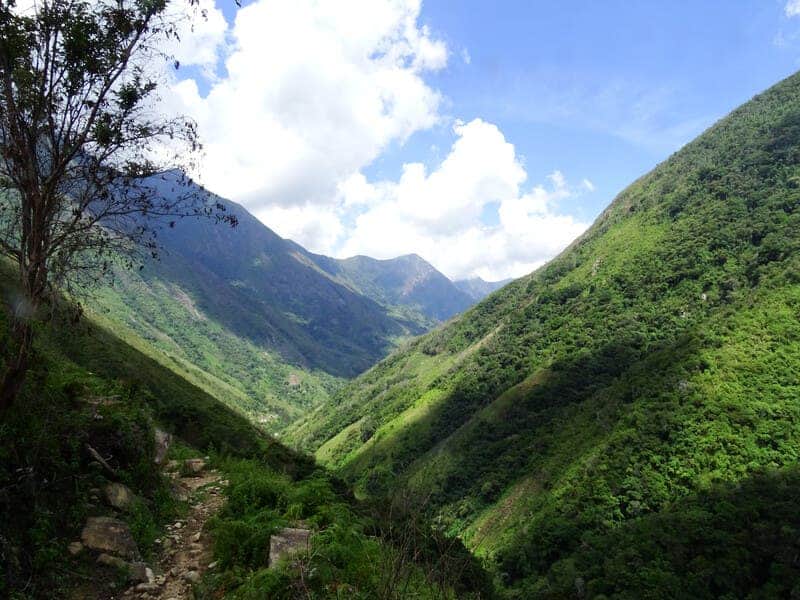A new study reports the rediscovery of the starry night harlequin toad (Atelopus aryescue), a species that has been lost to science ever since 1991. The discovery was made possible by the indigenous Arhuaco people living in the Sierra Nevada de Santa Marta, Colombia, the tallest coastal mountain on Earth, drawing attention that indigenous beliefs and conservation can go hand in hand.

Image credits Fundación Atelopus.
Harlequin frogs used to be a pretty successful group of species, hopping around from Costa Rica to Panama. Climate shifts and a blight of pathogenic fungi have largely driven the species at large into extinction — up to the point where now, the only known populations of these toads are one in Quepos, Costa Rica, and a few relict ones in western Panama. The night harlequin toad, a black-and-white-spotted member of this family, was considered to be extinct.
Indigenous knowledge
“While harlequin toads across Latin America at these higher altitudes have largely vanished over the past three decades as the result of a deadly fungal pathogen, it turns out that the starry night harlequin toad has bucked the trend,” said Lina Valencia, Colombia conservation officer at Global Wildlife Conservation. “We are tremendously grateful to the Arhuaco people for giving us this opportunity to work with them.”
The re-discovery of this species was made possible through a unique partnership between Global Wildlife Conservation (GWC) partner Fundación Atelopus — a Colombian NGO aiming to protect the harlequin toad — and the indigenous Arhuaco people. This particular toad is known as ‘gouna’ to the Arhuaco.
The species was effectively lost to science for the last three decades, in part because biologists have not had access to its habitat. Throughout this time, however, the Arhuaco have lived in harmony with the amphibian, protecting it as well as its fellow wildlife, and the local habitat. Kaneymaku Suarez Chaparro, a member of the Sogrome community and a biology student at the Francisco José de Cladas District University, explains that the Arhuaco see Sierra Nevada de Santa Marta as a “sacred” place, and the starry night harlequin toad as “guardians of water and symbols of fertility”. The toad acts as an indicator for when to take actions like planting crops or performing spiritual ceremonies and has shaped the Arhuaco culture for thousands of years.
It definitely sounds like something I’d want to protect.

Image credits Fundación Atelopus.
“We manage our resources and conserve our home as the law of origin dictates, which means that we live in balance with Mother Earth and all of the life here,” he adds.
The Sogrome chose this toad as a flagship for their community-based project, Amas la Sierra, the team explains, for its cultural significance. The project aims to show that we can accomplish our goals (such as scientific research or economic growth) without coming into conflict with the Earth’s natural systems.
After four years of cooperation with Fundación Atelopus the mamos (spiritual leaders) of the Villafaña and Sogrome allowed the team to see the toads in the wild but without taking photos (they explain its a test of “resisting temptation”, to allow for mutual trust). After a series of community gatherings, the mamos allowed the team to see and photograph the toad on a GWC-funded expedition.
“It is an incredible honor to be entrusted with the story of the starry night harlequin toad and the story of the Sogrome community’s relationship with it,” said Fundación Atelopus vice president and biologist José Luis
This particular study because it showcases how academic know-how and processes can be intertwined with indigenous knowledge, culture, and spiritual customs. While an argument can be made that the researchers would have been able to capture the toads much more quickly without the mamos’ spiritual customs, it may have been that without the locals’ knowledge and beliefs we never would have re-discovered it — or that the species may have already gone extinct.
“We were hoping to find one individual of the starry night harlequin toad, and to our great surprise we found a population of 30 individuals. We were full of joy and hope as we had the chance to observe a healthy population from a genus for which very few species remain,” adds Pérez-González.
The next steps will involve discussions between Fundación Atelopus and the locals to establish a monitoring program for the species, and to mix together scientific data and their spiritual customs to continue safeguarding the toads.
Eighty of the 96 known harlequin toad species are endangered, critically endangered or extinct in the wild, according to the IUCN Red List of Threatened Species. As of 2018, 37 harlequin toad species had disappeared from their known habitats and have not been seen since the early 2000s.









